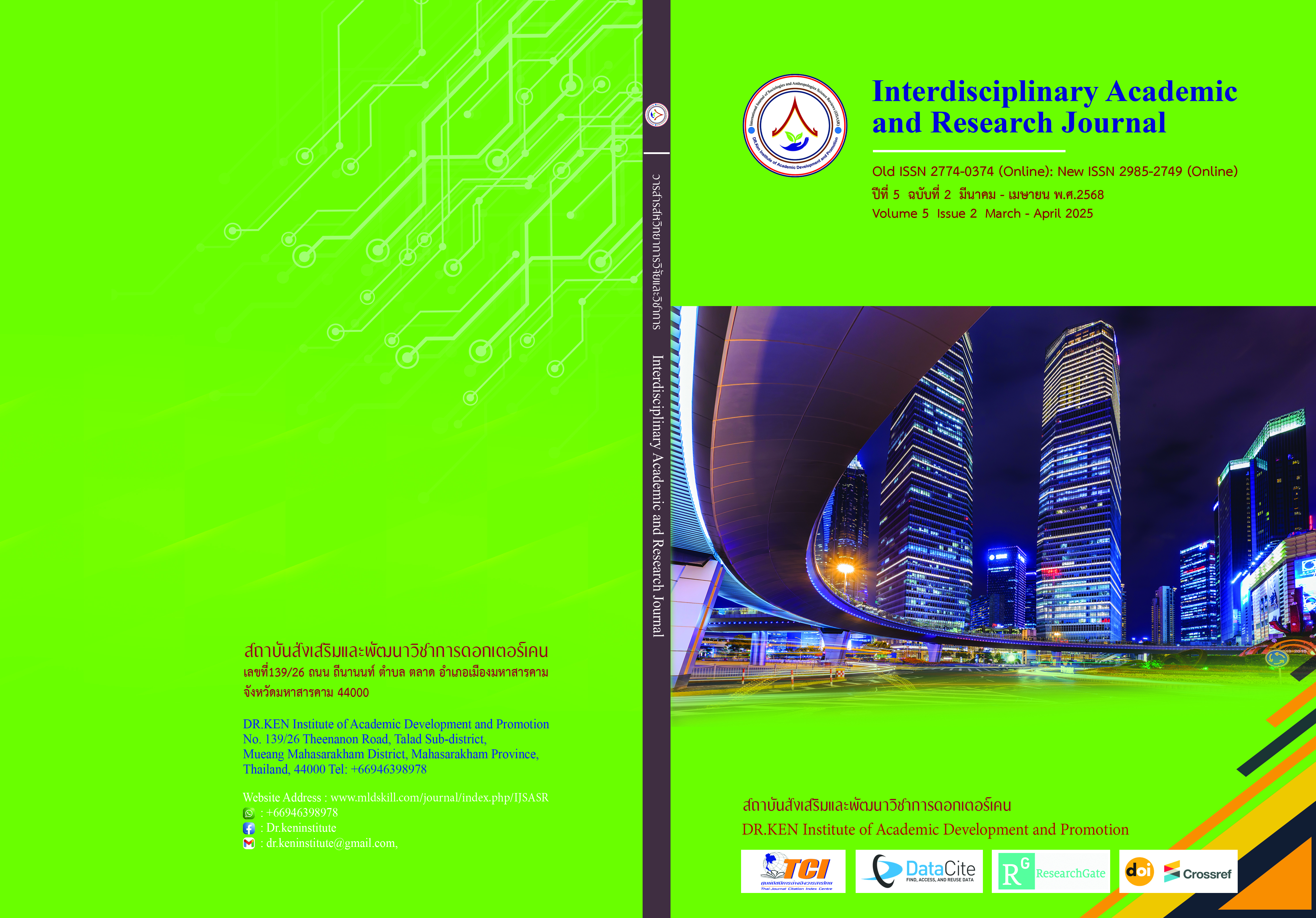Guidelines for Developing Quality Tourism in Kanchanaburi Province
DOI:
https://doi.org/10.60027/iarj.2025.282067Keywords:
Quality Tourism, Resource Management, Community Engagement, SustainabilityAbstract
Background and Aims: Developing quality Tourism is critical for improving visitor experiences while also ensuring sustainability, protecting cultural and environmental resources, and increasing long-term economic benefits for local communities. It promotes responsible tourism practices that strike a balance between growth and destination well-being. This research aims to study and develop quality tourism strategies for Kanchanaburi Province, focusing on factors that influence sustainable tourism. It also examines the roles of local communities, government agencies, and local entrepreneurs in fostering quality tourism. Quality tourism emphasizes efficient resource management, balancing development and conservation to create memorable experiences for visitors.
Methodology: The study adopts a qualitative approach, utilizing interviews and focus groups with stakeholders, including tourists, entrepreneurs, community leaders, and government officials, to gain insights into genuine perspectives and needs.
Results: (1) The findings highlight Kanchanaburi's substantial tourism potential, featuring prominent attractions such as the Bridge over the River Kwai, Sai Yok National Park, and Erawan Waterfall, which attract both domestic and international tourists. However, challenges persist in natural resource management, site maintenance, and unequal distribution of tourists, leading to overcrowding in certain areas and negatively impacting the visitor experience. Data analysis reveals that developing quality tourism in Kanchanaburi should prioritize sustainable management of natural and cultural resources. Community involvement is crucial to achieving sustainability; local communities should actively participate in managing and caring for tourism resources to ensure economic benefits return to the area. (2) The study suggests that improving infrastructure, such as eco-friendly transportation systems and accessible amenities, will enhance convenience and visitor satisfaction. Additionally, technology integration in tourism management, such as booking applications and digital platforms providing tourism information, can alleviate overcrowding at popular sites and encourage tourist dispersal to lesser-known attractions. Technology further boosts management efficiency and enriches the visitor experience. (3) Based on these findings, the research proposes a framework for developing quality tourism in Kanchanaburi, including promoting community engagement in all processes, building sustainable infrastructure, employing technology to improve tourism management, and preserving local natural and cultural resources. These strategies aim to create a sustainable tourism model that benefits both visitors and local communities in the long term.
Conclusion: The findings emphasize the importance of sustainable tourism development in Kanchanaburi, with a focus on natural and cultural resource management, community involvement, and infrastructure improvements. Incorporating technology and engaging local communities are critical strategies for improving visitor experiences, reducing crowding, and ensuring long-term economic and environmental benefits.
References
การท่องเที่ยวแห่งประเทศไทย. (2566). รายงานการสำรวจการท่องเที่ยวในจังหวัดกาญจนบุรี (หน้า 18-20). กรุงเทพฯ: การท่องเที่ยวแห่งประเทศไทย.
ชูเกียรติ แซ่ลิ้ม. (2562). การพัฒนาการท่องเที่ยวโดยชุมชนในประเทศไทย. วารสารการท่องเที่ยวไทย, 8(2),15-29.
สุนิสา วังศรีคูณ. (2563). บทบาทของการท่องเที่ยวเชิงอนุรักษ์ในการส่งเสริมชุมชนบ้านแม่กำปอง. วารสารวิจัยวัฒนธรรมไทย, 12(1), 112-130.
อุดมลักษณ์ อังกระโทก. (2561). การใช้เทคโนโลยี AR ในการส่งเสริมการท่องเที่ยวเชิงประวัติศาสตร์. วารสารการจัดการและนวัตกรรม, 10(3), 59-72.
Braun, V., & Clarke, V. (2006). Using thematic analysis in psychology. Qualitative Research in Psychology, 3(2), 77–101. https://doi.org/10.1191/1478088706qp063oa
Butler, R. W. (1999). Sustainable tourism: A state-of-the-art review. Tourism Geographies, 1(1), 7-25.
Creswell, J. W., & Plano Clark, V. L. (2011). Designing and conducting mixed methods research (2nd ed.). Sage Publications.
Denzin, N. K., & Lincoln, Y. S. (2018). The Sage Handbook of Qualitative Research (5th ed.). Sage Publications.
Eagles, P. F. J., McCool, S. F., & Haynes, C. D. (2002). Sustainable tourism in protected areas: Guidelines for planning and management. IUCN.
Kvale, S., & Brinkmann, S. (2009). Interviews: Learning the craft of qualitative research interviewing (2nd ed.). Sage Publications.
Lincoln, Y. S., & Guba, E. G. (1985). Naturalistic inquiry. Sage Publications.
Morgan, D. L. (1997). Focus groups as qualitative research (2nd ed.). Sage Publications.
Orb, A., Eisenhauer, L., & Wynaden, D. (2001). Ethics in qualitative research. Journal of Nursing Scholarship, 33(1), 93-96.
Patton, M. Q. (2002). Qualitative research and evaluation methods (3rd ed.). Sage Publications.
Pine, B. J., & Gilmore, J. H. (1998). Welcome to the experience economy. Harvard Business Review, 76(4), 97-105.
Richards, G. (2014). Tourism development trajectories: From culture to creativity? Tourism Geographies, 16(3), 317-323.
Smith, M. K. (2015). Quality tourism experiences. Journal of Destination Marketing & Management, 4(3), 221-223.
Timothy, D. J., & Boyd, S. W. (2003). Heritage tourism. Pearson Education.
Weaver, D. B. (2006). Sustainable tourism: Theory and practice. Tourism Management, 27(5),822-824.
Downloads
Published
How to Cite
Issue
Section
License
Copyright (c) 2025 Interdisciplinary Academic and Research Journal

This work is licensed under a Creative Commons Attribution-NonCommercial-NoDerivatives 4.0 International License.
Copyright on any article in the Interdisciplinary Academic and Research Journal is retained by the author(s) under the under the Creative Commons Attribution-NonCommercial-NoDerivatives 4.0 International License. Permission to use text, content, images, etc. of publication. Any user to read, download, copy, distribute, print, search, or link to the full texts of articles, crawl them for indexing, pass them as data to software, or use them for any other lawful purpose. But do not use it for commercial use or with the intent to benefit any business.














.png)

